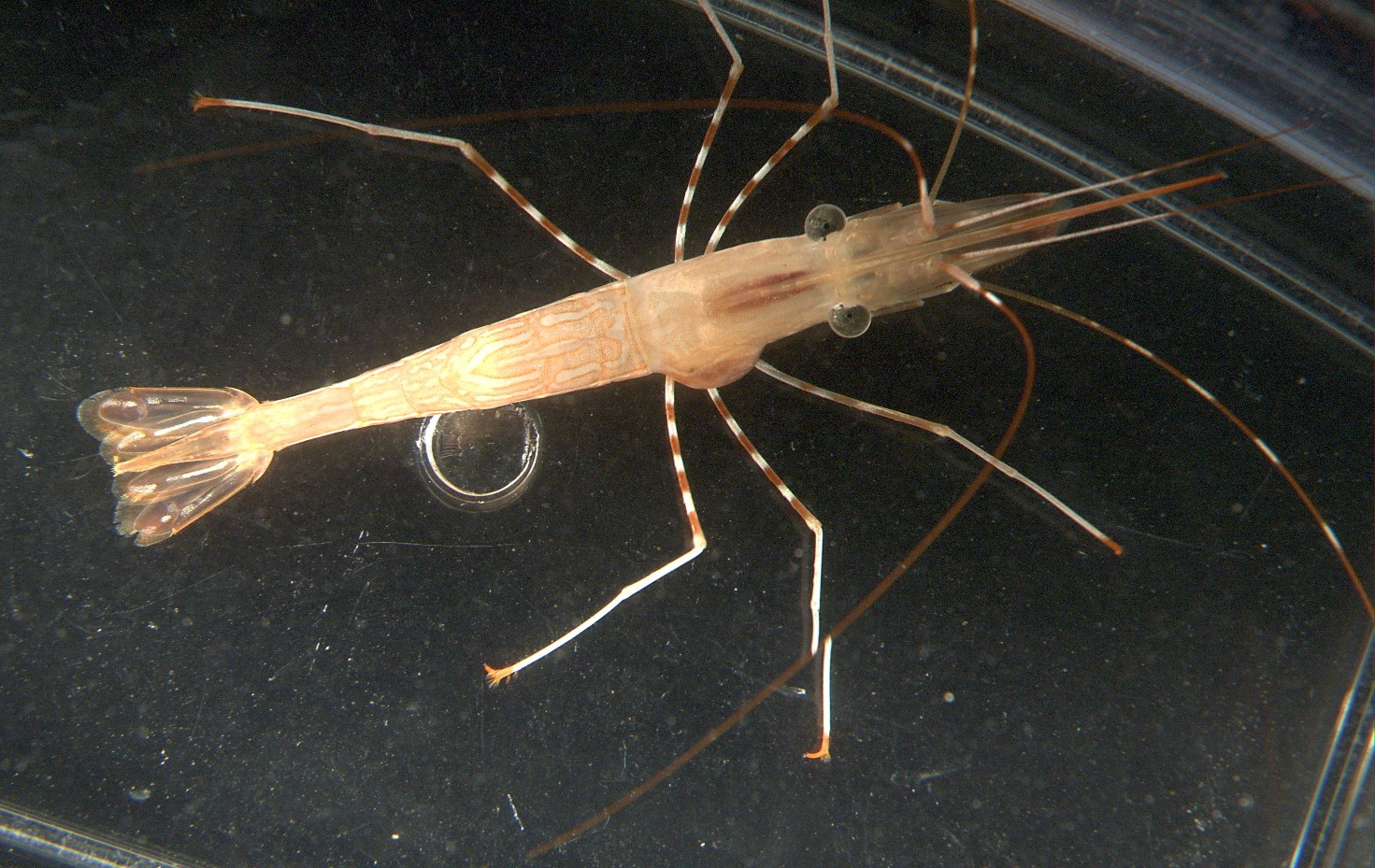Bopyroides hippolytes (Kroyer 1838)Common name(s): Shrimp parasitic isopod |
|
| Synonyms: | 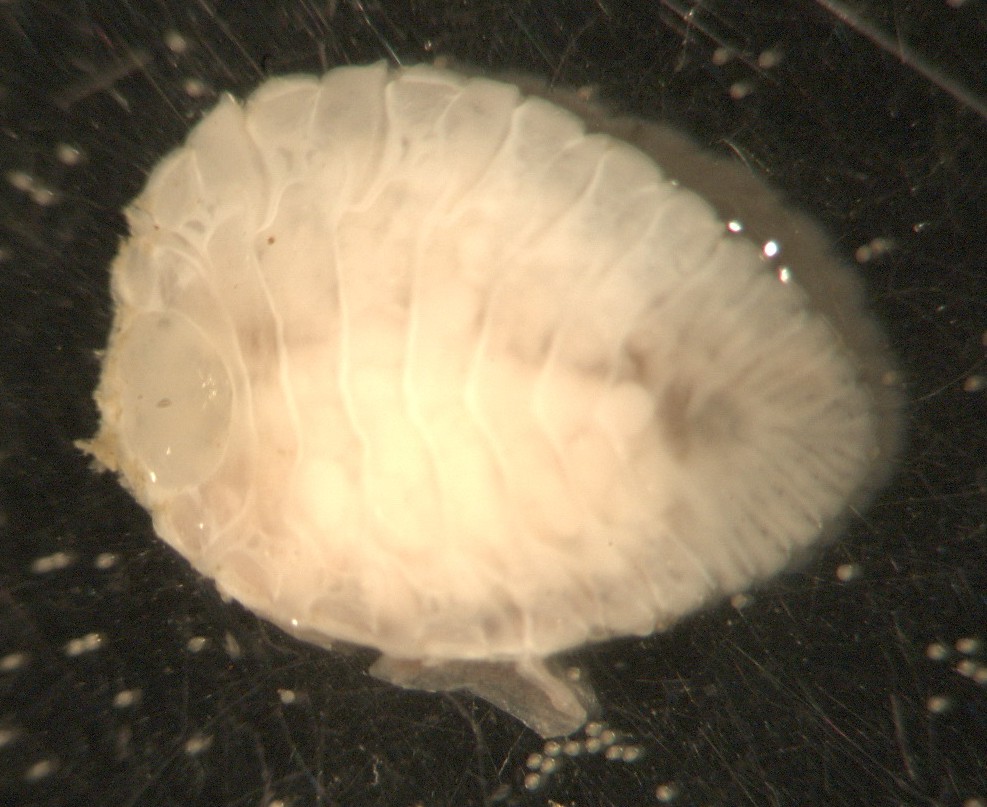 |
|
Phylum Arthropoda
Subphylum Crustacea
Class Malacostraca
Subclass Eumalacostraca
Superorder Peracarida
Order Isopoda
Section Bopyrina
Family Bopyridae
|
|
| A female Bopyroides hippolytes, about 2 cm long, from the gill chamber of the shrimp Pandalopsis dispar. | |
| (Photo by Dave Cowles, July 2008 ) | |
How to Distinguish from Similar Species:Argeia pugettensis lives on shrimp in family Crangonidae, and the female has well developed pleopods and uropods. Other bopyrids are found on thalassinids, galatheids, or hermit crabs, or on the dorsal side of the thorax or underside of the abdomen.
Geographical Range: North Pacific Ocean, Bering Sea, Arctic Canada, Greenland, eastern North America, Norway, and Britain. On our coast found down to southern California
Depth Range: Intertidal and subtidal.
Habitat: This isopod is parasitic on several families of shrimp, especially members of families Hippolytidae (such as Heptacarpus brevirostris) and family Pandalidae (such as Pandalopsis dispar and Pandalus jordani), but not on members of family Crangonidae.
Biology/Natural History:
Isopods of family Bopyridae live parasitically on the gills of other
crustaceans
such as shrimp. Typically a large female and a smaller male
are found
together on the same individual (photo).
Usually they parasitize only one side of the host--rarely is a shrimp
parasitized
on both sides by bopyrids. The females are usually
asymmetrical (see
photo above), while the males are symmetrical (photo).
They seem to enter the shrimp early in the shrimp's life and remain
through
molts. In Pandalopsis
dispar they appear to retard growth and delay
sex change in
the host shrimp. Bopyrids develop to young larvae within the
mother's
marsupium
formed by her oostegites.
In this individual, the mother's ventral side was pressed against the medial
surface of the gill cover instead of against the gill itself (photo).
The oostegites
did not overlap, but simply formed a wall around the eggs while the
host's
gill cover formed the floor of the chamber the eggs were
within.
When I removed the female from the gill chamber her eggs mostly spilled
out because they were not fully enclosed by the ooostegites.
The first larval stage is 2-3.5 mm long and is called an
"epicaridium".
It has six free pereonites,
each of which bears a pair of subchelate
pereopods
which it uses to attach to an intermediate planktonic host such as a
copepod.
On that host it molts into a "microniscus" or "microniscum" larva, then
later to a "cryptoniscum" or "cryptoniscus", which is up to 7 mm long
and
has a 7th pereonite.
At this stage it releases from the intermediate host, becomes benthic,
and finds its final crustacean host. Within the host it
metamorphoses
into either a large, asymmetrical female or into a smaller, symmetrical
male (apparently it can become either sex). The adult form is
called
a "bopyridium".
| Return to: | |||
| Main Page | Alphabetic Index | Systematic Index | Glossary |
References:
Dichotomous Keys:Kozloff, 1987, 1996
Smith and Carlton, 1975
General References:
Butler, 1980
Lamb and Hanby, 2005
O'Clair and O'Clair, 1998
Scientific Articles:
Web sites:
General Notes and Observations: Locations, abundances, unusual behaviors:
This view shows the bopyrid parasite within the right gill
chamber of
the host, Pandalopsis
dispar.
(The large bubble-like structure next to the abdomen is a part of the
aquarium)
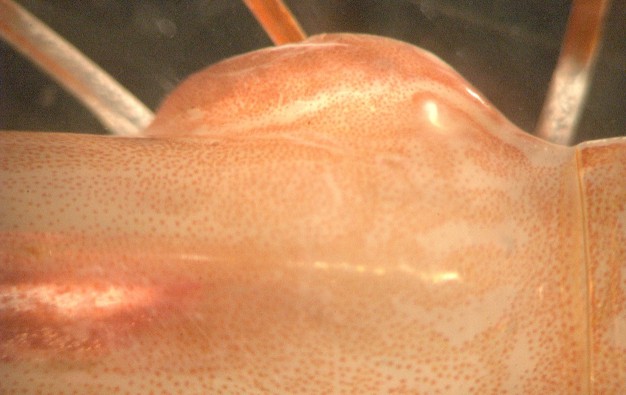
A closeup of the parasite within the gill chamber, seen from the dorsal
view of the host. The host's head is to the left in this
view.
| Below are ventral views of Bopyroides hippolytes, both within the host gill chamber (left) and after removal (right) | |
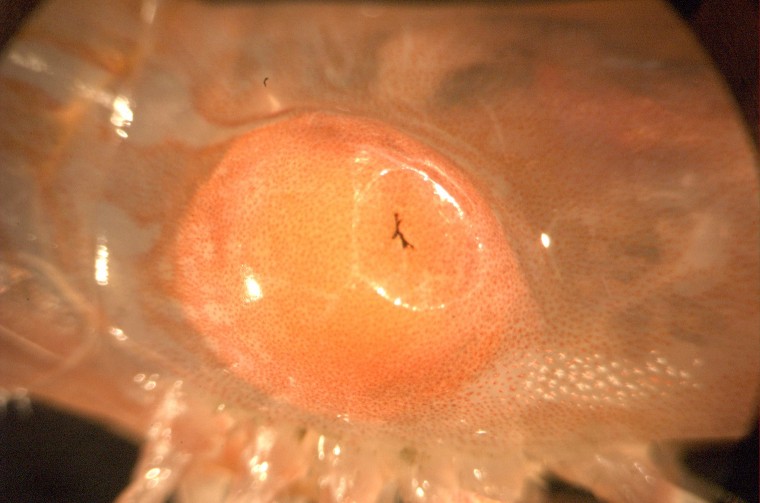 |
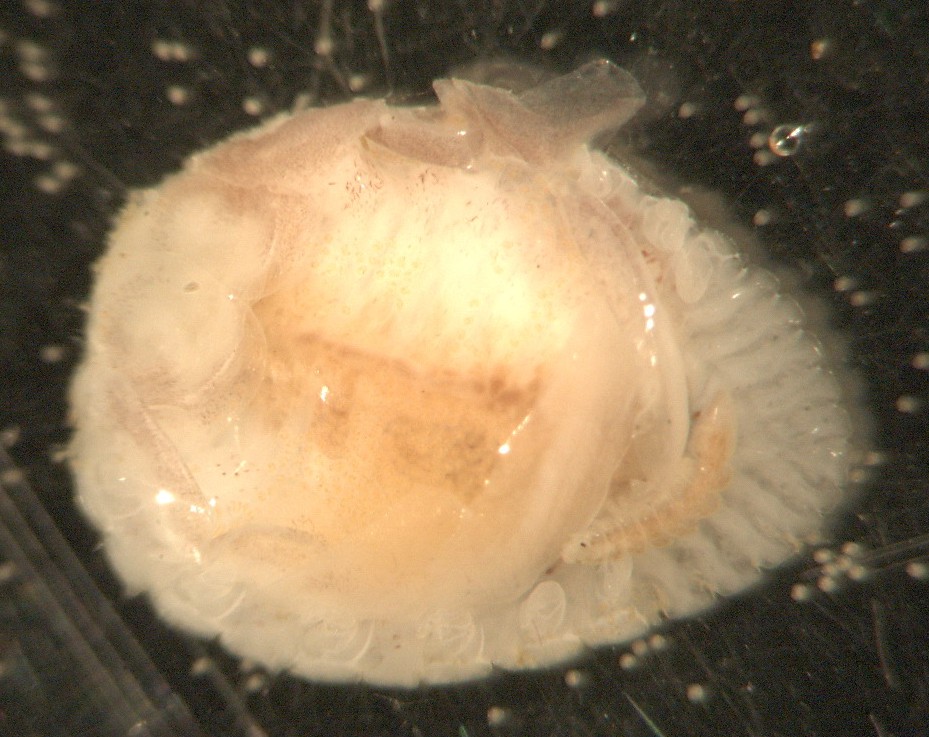 |
| A view of Bopyroides hippolytes from the outside through the host's carapace wall of the gill chamber. Notice the overall yellowish coloration, which is apparently due to the large cluster of eggs the female is holding under her thorax against the carapace wall. The host's carapace wall curves smoothly out around the bopyrid, probably indicating that the bopyrid was present at the last molt of the host when the host carapace was soft and pliable. Note, however, the indentation on the host wall, which also seems to be permanent, and the slight injury to the wall. | This is a ventral view of the same individual as above and at left. The circle of large oostegites can be seen around the edges of the female's thorax, but as can be seen, the oostegites do not fold together and overlap in the middle. Instead, the ventral side of the mother with a number of remaining eggs can be seen within the circle of oostegites. This surface was pressed against the inner surface of the host's carapace within the gill chamber while in the host. Many eggs spilled out when I removed the female from the host; a few of which can be seen scattered around in this view. Notice also the small, symmetrical male clinging to the underside of the female's abdomen. |
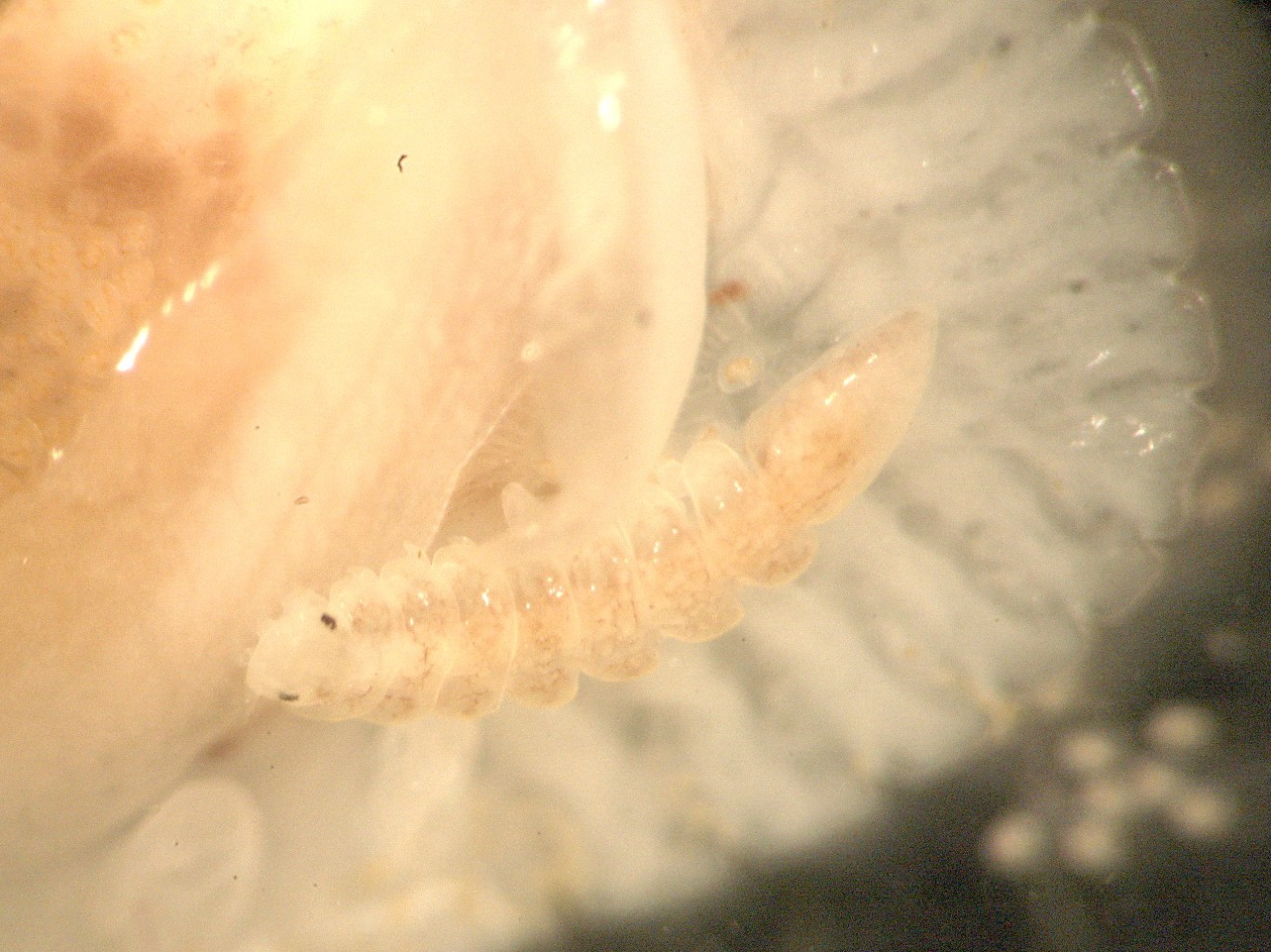
This view shows the diminutive male, 5-8 mm long, which is clinging
to the ventral abdomen of the female with its head against the female's
posterior oostegites.
Notice that the male has distinct eyes, and its pleonites
are fused.
| The following photos show a Bopyroides hippolytes on a Pandalopsis dispar shrimp captured from 110-200 m depth in the San Juan Channel, 2010. Photos by Dave Cowles |
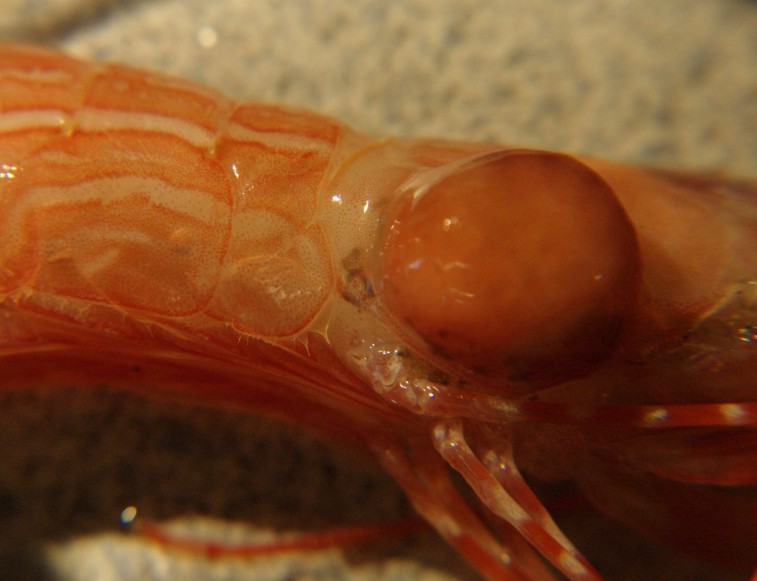 |
| In the photo above the parasite can be seen making a sharp bulge in the host shrimp's carapace. |
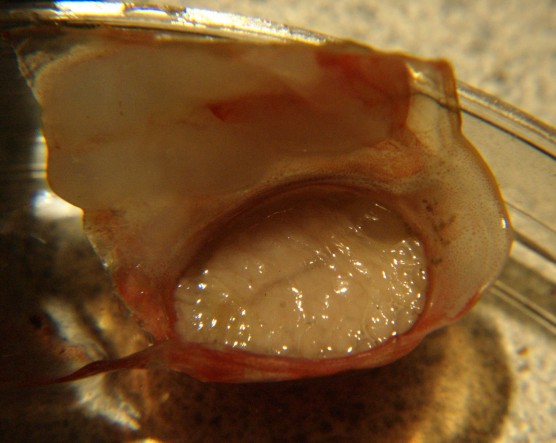 |
| Opening the carapace shows how snugly the parasite is packed into the branchial chamber. The surface exposed here would have been in contact with the host's gills. |
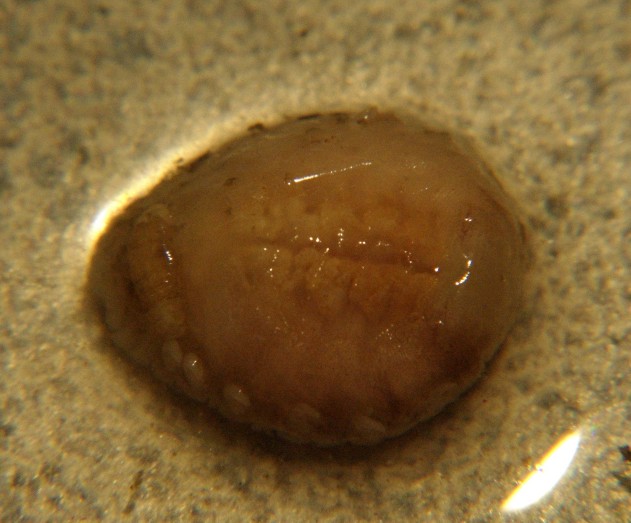 |
| The female is large, with a reduced-size male hanging onto the abdomen (to the left). |
Authors and Editors of Page:
Dave Cowles (2008): Created original page
CSS coding for page developed by Jonathan Cowles (2007)
